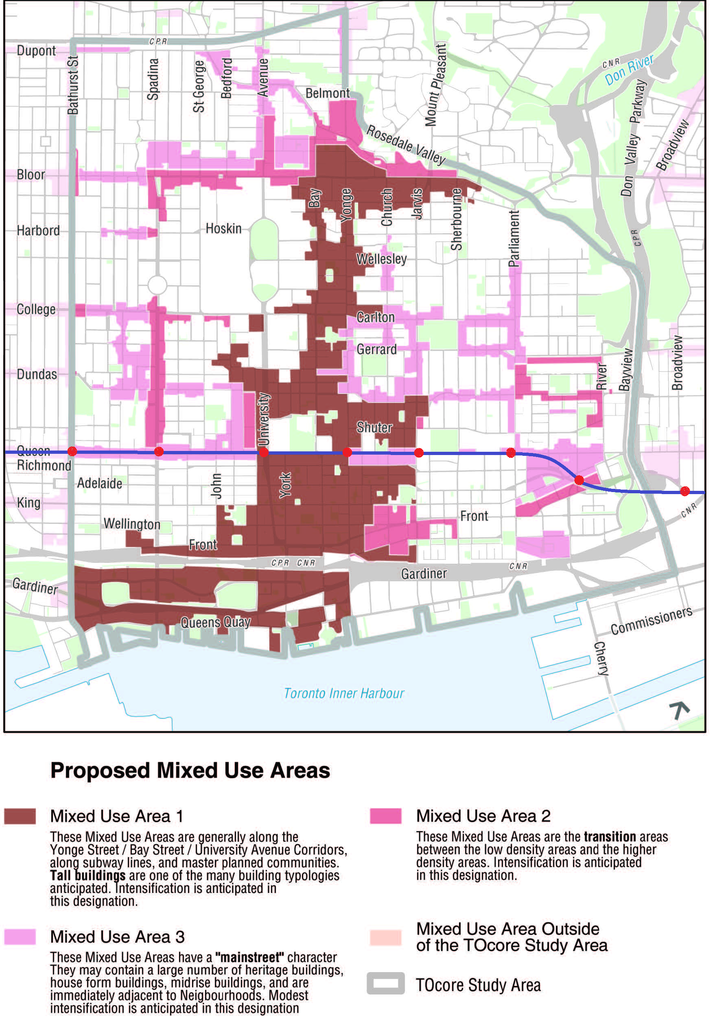M II A II R II K
Senior Member
It matters more where the stations are anyway.
Correct me if I'm wrong but Pape is totally residential. There's nothing to redevelop there while Carlaw actually does have redevelopment potential to complement the nearby neighbourhoods. I think that's what the report was heavily implying.
Correct me if I'm wrong but Pape is totally residential.
And this can't be redeveloped? Yonge and Eglinton used to be the same before the Yonge subway came through. As were many other areas of the city once the subway arrived. There wouldn't be much growth if all we could build on were parking lots.
Indeed - the whole thing is wrapped up on the "better fit" argument when it is in essence an unwillingness to disturb the status quo, added cost and complexity be damned.
AoD
There's nothing that says Pape can't be redeveloped...
Yonge and Eglinton used to be the same before the Yonge subway came through. As were many other areas of the city once the subway arrived. There wouldn't be much growth if all we could build on were parking lots.
In city planning, "stable residential area" means that the city intends to preserve the existing buildform and physical character of the neighbourhood, and that any new developments would have to respect that. Growth is instead directed along the "Avenues", which in this case would be Carlaw. You may disagree, but that's what the policy is.

Another issue, is that it's difficult to put together large enough parcels of property to develop, with so many houses so close together. You don't see much of that, developers tend to go for the bigger lots, when they exist. Perhaps we'll see more of it in 50 to 100 years. There's still a lot of potential for densification along Danforth - but it requires, perhaps years, to put together the land parcels. Probably part of the reason they were so keen to develop the Honest Ed's site, as they'd slowly brought up all those neighbouring properties over ... what 30 to 40 years? Most developers don't tend to think in time frames that long.In city planning, "stable residential area" means that the city intends to preserve the existing buildform and physical character of the neighbourhood, and that any new developments would have to respect that. Growth is instead directed along the "Avenues", which in this case would be Carlaw. You may disagree, but that's what the policy is.
It's literally a 100m walk - no one is going to stop developing at Carlaw just because the station is on Pape.
West of Spadina, pretty much everything on Queen and points north are classified as either "heritage" or "stable neighbourhood". Someone posted a picture of it from the Plan. Good thing the hacks at planning recommended Queen!
This is not the picture which I was talking about but it's more ammo against the incompetents at planning

You should become a city planner.
As usual with these "just walk a little longer" transit discussions, your estimate is deliberately way off from reality. And of course you have nothing to say about the subway to bus transfer, which would be inconvenient any way you look at it.
View attachment 101285
However if you are a resident who live at Carlaw & Queen, then sure 2 extra minutes is not a big deal. But if your condo is further up the street near Dundas, then that 2 minutes is an addition to your existing walk. In fact if you also consider that the north side subway entrance at Colgate Ave would be gone with the Pape alignment, then the extra walking time for many residents would look more like this:
View attachment 101290
You should become a city planner.
We're not a good fit. I don't bow down to Tory or his pet dragons.
West of Spadina, pretty much everything on Queen and points north are classified as either "heritage" or "stable neighbourhood". Someone posted a picture of it from the Plan. Good thing the hacks at planning recommended Queen!
This is not the picture which I was talking about but it's more ammo against the incompetents at planning
